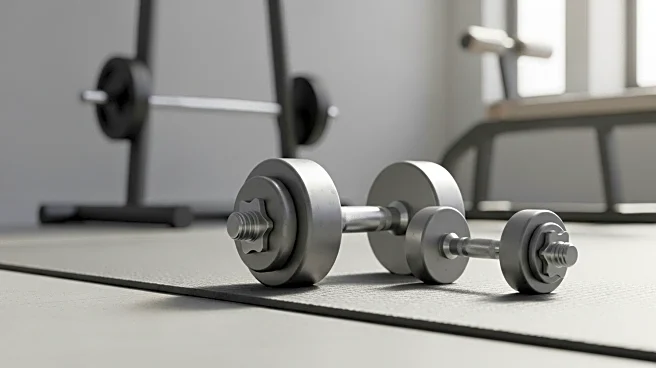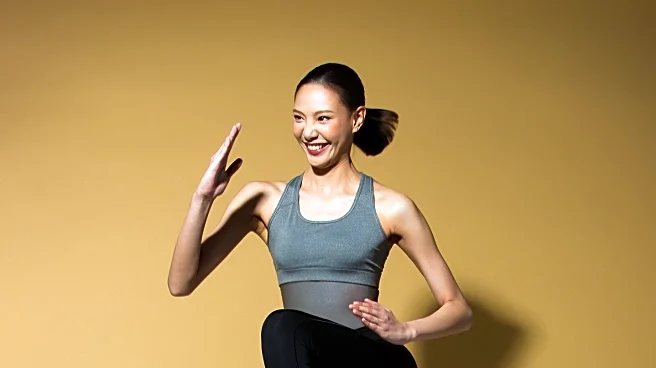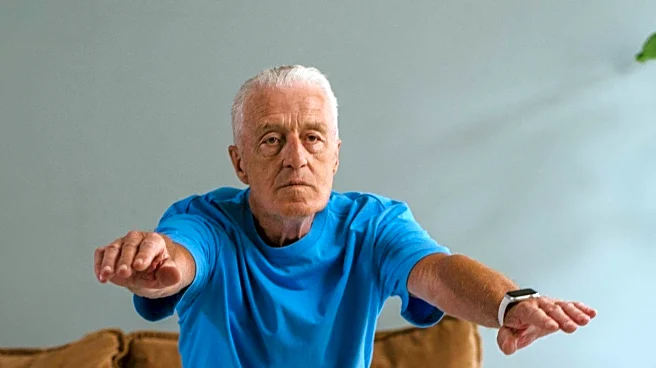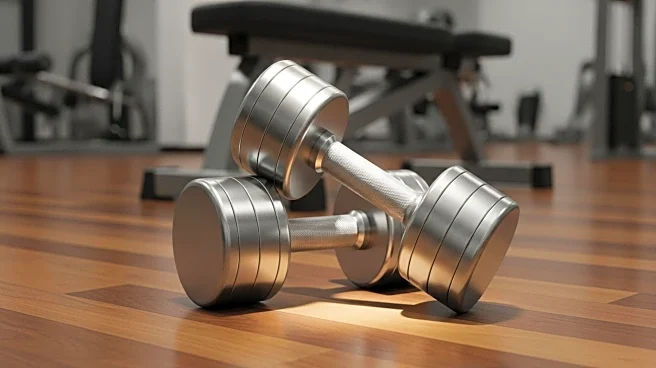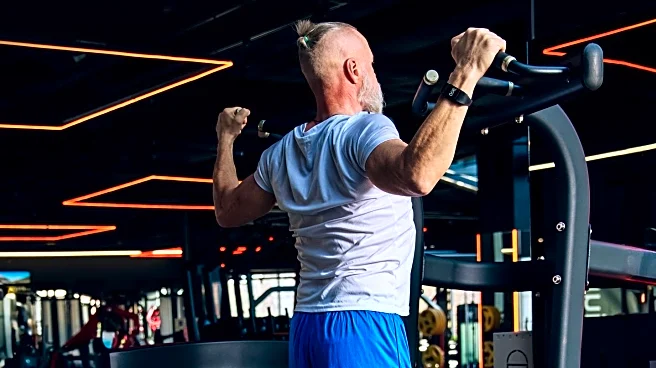What is the story about?
What's Happening?
A recent article from Sports Illustrated discusses a minimal workout strategy that allows athletes to maintain muscle strength with just one workout per week. The approach emphasizes intensity over volume, suggesting that a single, focused session can preserve strength effectively. This method is particularly beneficial for young adults, who can maintain their strength for up to 32 weeks with high-intensity workouts. For older adults, two weekly sessions are recommended to counteract age-related muscle decline. The strategy involves compound lifts such as squats, deadlifts, presses, and pulls, performed in short, intense sessions.
Why It's Important?
This minimal workout strategy is significant as it challenges the conventional belief that frequent gym sessions are necessary to maintain strength. It offers a practical solution for individuals with busy schedules, allowing them to sustain their fitness levels without dedicating extensive time to exercise. The approach can benefit everyday athletes, military personnel, and older adults by providing a sustainable method to preserve muscle strength and overall health. By focusing on intensity, this strategy can help prevent the loss of performance, confidence, and long-term health benefits associated with strength training.
What's Next?
The adoption of this minimal workout strategy could lead to a shift in fitness routines, encouraging more people to prioritize intensity over volume. Fitness professionals and trainers may begin to incorporate this approach into their programs, offering clients a more efficient way to maintain strength. As awareness of this method grows, it could influence the design of gym schedules and personal training sessions, making fitness more accessible to those with time constraints.
Beyond the Headlines
The minimal workout strategy also raises questions about the traditional fitness industry’s emphasis on frequent, high-volume training. It challenges the notion that more is always better, potentially leading to a reevaluation of workout norms and practices. This approach could inspire further research into the effectiveness of different training methods, ultimately contributing to a more nuanced understanding of exercise science.
AI Generated Content
Do you find this article useful?
